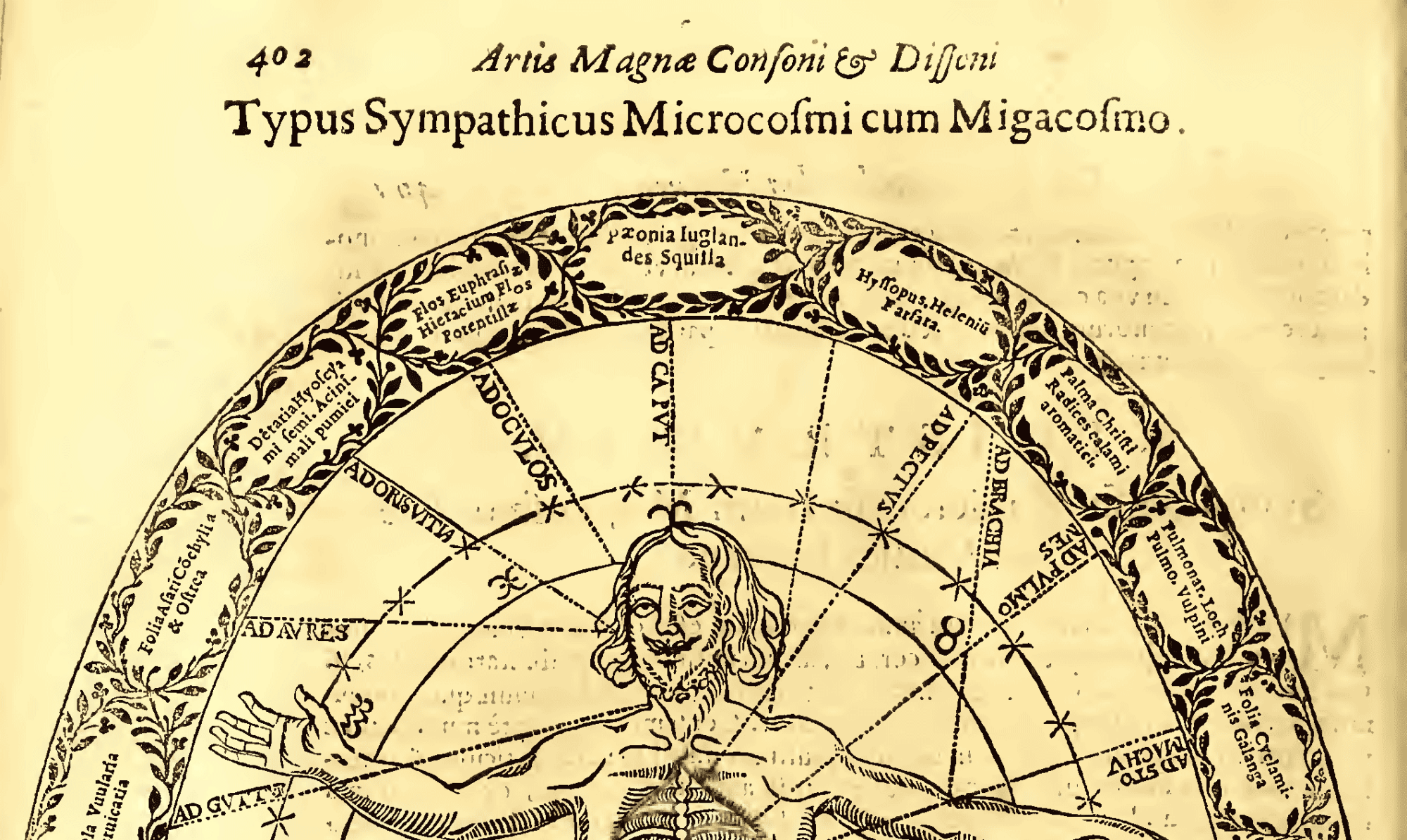ANG: mystic chord; NEM: mystischer Akkord; FR: accord mystique; IT: accordo mistico (per quarte sovrapposte).
ET: Grš. mystikós = ki pripada misterijem, skrivnosten (‹DUD›, 447); ♦akord♦.
D: »Teofizični (naziv za) Skrjabinov ♦kvartni akord♦, ki je postal posebno znan prek njegovega orkestralnega dela Prometej, pesnitev ognja, op. 60 (1911), ter se zato imenuje tudi ♦Prometejev akord♦. Skladatelj je v njem videl … nepopoln odsev 8. do 14. ♦parcialnega tona♦ (c d e –fis [G] +as –b; ‘♦sintetični akord♦‘). Pri Skrjabinu se mistični akord pojavlja že v 1. stavku 4. klavirske sonate, op. 30 (1903) (gl. mdr. takta 18 in 22), potem pa tudi v (Scherzu za klavir iz 1905), op. 46.
Tukaj se (mistični akord) kaže kot dominantni septnonakord z dvojnim zadržkom (fis1 in a1) proti kvinti (G1). Sloves, ki ga ima mistični akord v Skrjabinov dellih okrog in po op. 60, temelji na uporabi, ki zanika njegov funkcijski izvor. V zadnjih 9 taktih 7. klavirske sonate, op. 64 (1911/12), je tonska zgradba sestavljena izključno iz 6 ♦tonov♦ mističnega akorda, transponiranega na fis, njegova horizontalna in vertikalna uporaba pa deluje kot napoved ♦dvanajsttonske tehnike♦. Pri Skrjabinu pa horizontalne in vertikalne kombinacije med ♦toni♦ določa intervalna ♦struktura♦ določega ♦akorda♦, medtem ko pri Schönbergu to nalogo prevzame ♦dvanajsttonska vrsta♦. Pozneje je Skrjabin uporabljal tudi druge ♦sintetične akorde♦.« (‹HU›, 620)
KM: Mistični akord se kot primer 2 nahaja tudi v D ♦kvartnega akorda♦.
V ‹JON›, 245, je navedeno »abstraktna ♦lestvica♦«, iz katere je izpeljan mistični akord:
V ‹FR›, 70, se kot izvor mističnega akorda ne navaja te, ampak podobno ♦lestvico♦ (gl. primer v D ♦Prometejeve lestvice♦). Ta ♦lestvica♦ se v ‹JON›, 245, navaja kot primer ene izmed Skrjabonovih ♦sintetičniih lestvic♦.
GL: ♦agregat♦ (D 1), ♦akord♦, ♦kvartni akord♦, ♦Prometejeva lestvica♦, ♦sintetični akord♦.
PRIM: ♦Prometejev akord♦.
‹APE›, 187 = vodilka h ♦kvartnemu akordu♦; ‹BKR›, III, 193 = vodilka k »Skrjabin, Alexander«; ‹FR›, 56; ‹GR6›, XIII, 8; ‹HI›, 310 = vodilka k ♦sintetičnemu akordu♦; ‹JON›, 180–181; ‹L›, 8; ‹RAN›, 524; ‹SLON›, 1469


